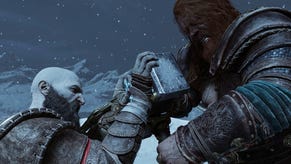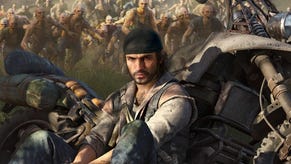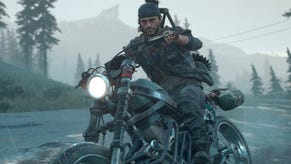Days Gone PC: a quality conversion that elevates the console experience
And performance is solid too.
Sony promised us more PC conversions of their stellar first party development output and while Horizon Zero Dawn illustrated that this is far from a simple process, Days Gone is on another level. The upgrades are strategically chosen but effective - and performance is solid on both Nvidia and AMD hardware. In fact, there are one or two touches here and there included in this game that really hope to see other developers bring to their own titles, especially when it comes to configurability. While we're not getting the ultimate package here - there's no ray tracing and disappointingly, no DLSS - there's no doubt that this is a solid, impressive port.
Booting up the PC version of Days Gone, it's immediately apparent that this isn't just a basic PS4 Pro conversion. The game is based on Epic's Unreal Engine 4 and I was happy to see that Bend Studio had updated the PC version to include a more recent UE4 innovation - software-based screen-space ray traced global illumination - available as an upgrade over the standard ambient occlusion tech deployed on the console versions. Essentially, the appearance of light bouncing around a game scene is emulated in screen-space, delivering a richer presentation with more realistic lighting and better, more realistic shadows. If light hits a red surface, for example, some measure of that 'redness' will illuminate the surroundings where appropriate. If this sounds familiar, The Coalition made a similar upgrade to the Xbox Series and PC versions of Gears 5, again by dipping into more recent UE4 engine updates and adding it to their existing codebase. The old SSAO is still there though for that authentic console look - it's now simply the 'high' setting for the in-game lighting.
The second largest upgrade that the PC version of Days Gone gets over the console versions comes from texture quality. In side-by-side comparisons, the improvement via higher quality assets is pretty easy to see and affects nearly every texture you can find in the game, definitely improving the overall look. In terms of where the existing console version compares in terms of PC's quality settings, it's difficult to say. It doesn't seem to align with any of the presets, honestly presenting as lower than PC's lowest texture streaming option.
Beyond global illumination and texture quality, the last majorly visible upgrade over the PS4 Pro version comes from resolution. This is perhaps inevitable: Bend Studio leaned into checkerboarding to allow a 4.2TF Radeon GPU to produce a good-looking presentation designed for 4K displays. With more horsepower now available on mid-range gaming PCs, users can go native instead, meaning additional clarity overall and no checkerboard artefacts on elements such as hair. Similarly, post-processing is no longer affected by checkerboarding, so all post-processing effects such as motion blur, screen-space shadows and more look much better, without striated aliasing artefacts. Depth of field no longer has a squashed and fuzzy look, and that also means that there are no longer any low resolution outlines around geometry that intersects with it.
Other upgrades are more subtle, but still appreciated. Volumetric lighting and clouds can be run at a higher resolution on PC, while level of detail settings can be ramped up. It's subtle perhaps, but with the vegetation preset, the very high setting definitely offers a lot more detail in the far distance. That said, it feels like most views in the game are balanced around not seeing too far anyway, so this upgrade is not always going to be very visible. Again, the console version looks to use a custom setting: it lacks the draw distance on distant vegetation delivered by PC on high or very high settings, yet has closer detail draw more similarly to very high than high. It's an interesting 'inbetweener' compromise. Other settings are the same as console at its best - such as geometry quality, where level of detail transitions are a match for PS4 Pro/PS5. Shadow quality follows a similar route where high is the same as PS5 and medium and low are degraded by comparison.

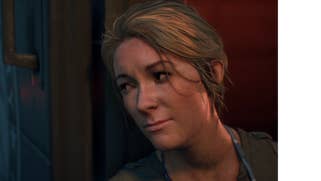



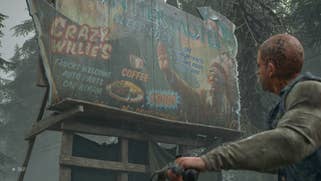
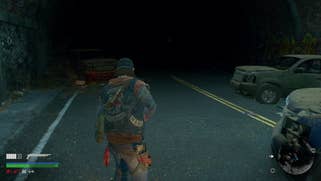
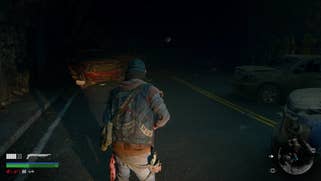

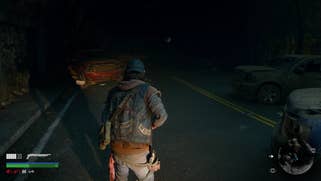
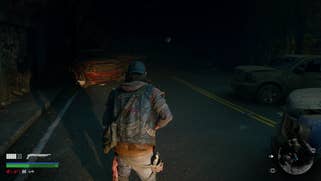
Beyond the realm of visuals, the PC game now spends a lot less time loading than it does on consoles - even on PlayStation 5. For game loading in general, a 9.5 second load time on a fast NVMe PC SSD takes PS5 33.5 seconds by comparison, so I assume that this is an area where backwards compatibility isn't leveraging all of the storage potential or CPU power of the new console. This carries over to in-game moments as well, where even PS5 features some loading screens between gameplay and cutscenes. Meanwhile, playing on PC, a simple fade-to-black with no screens is used to mask loading, which does not break the flow of the game as much.
Optimised settings? I used an RTX 2060 (non-Super) and ran at 70 per cent of 4K, which is effectively 1512p - similar to the pixel throughput of the checkerboarded PS5 version. I paired this with a Ryzen 5 3600, one of the most popular mid-range CPUs of the last couple of years. Only two settings have a lot of bearing on performance and the first is lighting. At higher resolutions like this, the RTX 2060 gains around 15 percent performance across all scenes by dropping down to the high setting, which turns off SSGI and replaces it with SSAO - which can be an acceptable loss, perhaps. Do not go any lower though as key features like screen-space reflections and screen-space shadows and even aspects of the game's lighting itself are omitted, which I do not recommend.
Another potential optimisation is in the volumetric lighting setting, which can be turned down from high to medium to gain a universal eight percent of extra performance. But here, once again, do not go down to low even though it may look fine in some scenes, as this reduces cloud quality down to a level that I think is less than appealing. Other than these choices, the rest of the settings in the game put you below what is happening on console - which represents the developer's original vision, after all. Interestingly, the game uses very little VRAM even at higher settings, so there should be some flexibility in retaining the higher quality textures on older GPUs.
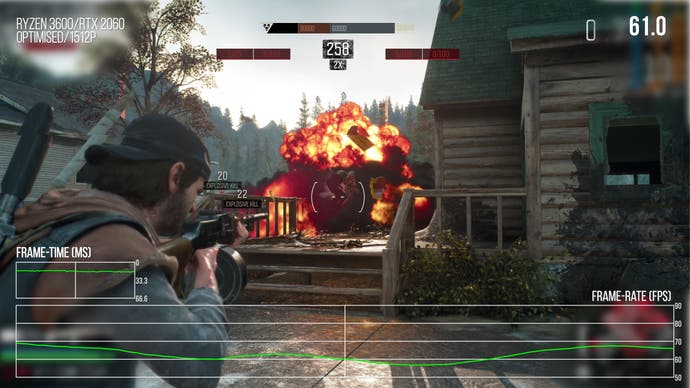
Finally, it would be remiss of me not to point out just how good the options menu is. For one, it is very fast and navigable with keyboard or mouse without requiring one or the other, and there's controller support too. Secondly, for mouse users, it takes full advantage of the fact that the mouse is a pointer device which makes scrolling useless - so like your favourite RPG inventory of old, you see every option without scrolling. Aspects like this may seem small, but triple-A PC games can still get these things wrong, making menu navigation an irritation instead of a joy like it is here.
In fact, the graphics menu hits so many high points that I hope other developers take note. For one, all of the graphics options adhere to the left side of the screen and the menu splash goes completely transparent, meaning that every tweak and change you make plays out in real-time. You can literally see what you're changing it as you're changing it. This is reflected with continually updating frame-time metrics in the top-right. This is excellent! For the knowledgeable, you have an immediate understanding of what impact a graphical option has on your performance - how much GPU time you're expending on an effect by raising the setting, or how much you're clawing back by lowering it. This is the best options menu I have seen since Gears 5 and Gears Tactics and I really hope that it becomes the model going forward.
Performance? It's good. On console-like settings with the higher quality textures, an RTX 2060 should be good for 60fps at 1440p-1512p in most scenarios. Only the most intense Horde scenes cause issues and you can seek those out yourself easily enough for testing purposes by dipping into the challenge mode, which acts as a strong workout for your rig - just as it does on PS4, PS4 Pro and even PlayStation 5. In my tests, I found that opting for these optimised settings over the maxed out alternative gives you a hefty 21 percent performance boost.
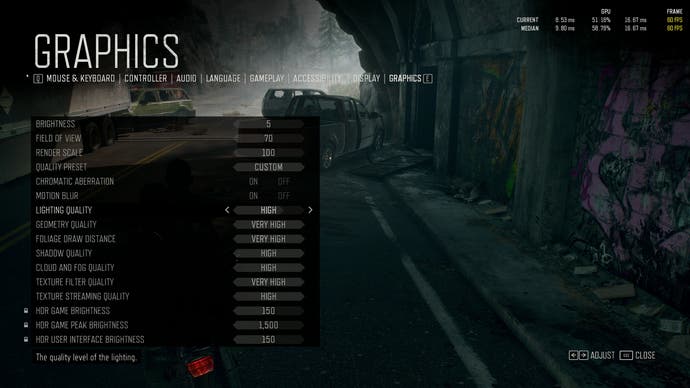
Looking at the more modern mid-range GPUs I have from AMD and Nvidia in the form of the RX 5700 and RTX 2060 Super, I found performance to be practically identical in cutscenes, though Nvidia fares better in detail-rich in-game scenes. For example, in one cinematic that concludes looking out over an open area full of zombies, the 2060 Super moves ahead of the RX 5700 by 14 percent. In less extreme scenarios, the gap closes to something like four percent. Days Gone is a DX11 title, so I do wonder if AMD's DX11 driver may be impeding performance here.
So, Days Gone is looking good - and it is, but it's not perfect. One bug I found on all PC configurations I tested concerns game speed. For some reason, moving around on the motorcycle or even walking about the game world can cause the speed of the game to slow down and then return to normal rapidly. When this happens, the game looks like it is having performance issues, but in reality, Days Gone is producing perfect frame-rates. Remarkably, it really is the speed of the game update itself that is the issue - there's the illusion of hitching and stuttering even though performance is actually locked (we tested at 30fps too). This doesn't happen on PS4 Pro or PS5. The second bug concerns some ground decals, which look like they are projecting at the wrong depth, which hopefully should be easy to fix.
In conclusion though, this is a successful release in my view. Adjustable resolutions, frame-rates and ultra-wide support are in, and so is a tweakable field of view. Users can jettison checkerboarding, enjoy higher quality artwork and improved global illumination and draw distances. Performance is good and the amount of noticeable bugs and issues is very much on the low side. It's an excellent conversion overall though and I highly recommend checking it out.



